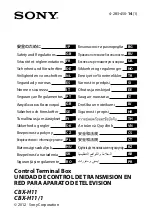
NEO 2 Interface Developer’s Guide
Copyright © 2019, International Technologies & Systems Corporation. All rights reserved.
227
Discretionary Data for a Mag-Stripe transaction may include the following objects, with a
possible maximum length of 117 bytes (15 TL, 102 V):
FF8106
var
Discretionary Data
DF812A
56 DD Card (Track 1)
DF812B
8
DD Card (Track 2)
DF8115
6
Error Indication
9F6E
32 Third Party Data
The most typical Intermediate OUT Signal (for cases such as Error – Other Card and Try Again)
are only required to include the Outcome Parameter Set and the Error Indication and the L2 tests
usually focus on verifying data within these objects.
Tag
Len
Data Object
DF8129
8
Outcome Parameter Set
FF8106
10
Discretionary Data
DF8115
6
Error Indication
(
3) Signal Data TLV – FFEE04
A proprietary TLV is defined to hold the intermediate signal data during a transaction. It will be
populated with one or more signal objects as the UI_MSG_Signal function in UserInterface.c
receives MSG Signals and the UI_OUT_Signal function in UserInterface.c receives OUT Signals.
This tag must be included in the ACT command to enable the signal data capture feature during
the transaction. If it is received in the ACT command this feature is enabled and the Signal Data
Handler will add signal data to the buffer. If it is not received, the Signal Data Handler will do
nothing and the length of this TLV will remain 0 and nothing will be returned.
A second proprietary tag is defined (FFEE05) which is used to separate and identify each
individual signal entry added to the buffer, whether it is a MSG signal or an OUT signal. A
new
tag (DF8914) which includes Activate Response TLVs (Table 29) may be included in FFEE05.
When the transaction is complete, if tag FFEE04 was received in the ACT command and the
Signal Data tag is not empty, it will be added to the ACT response. The signal data buffer (the
“contents” of FFEE04) is cleared when an ACT command is received.
















































